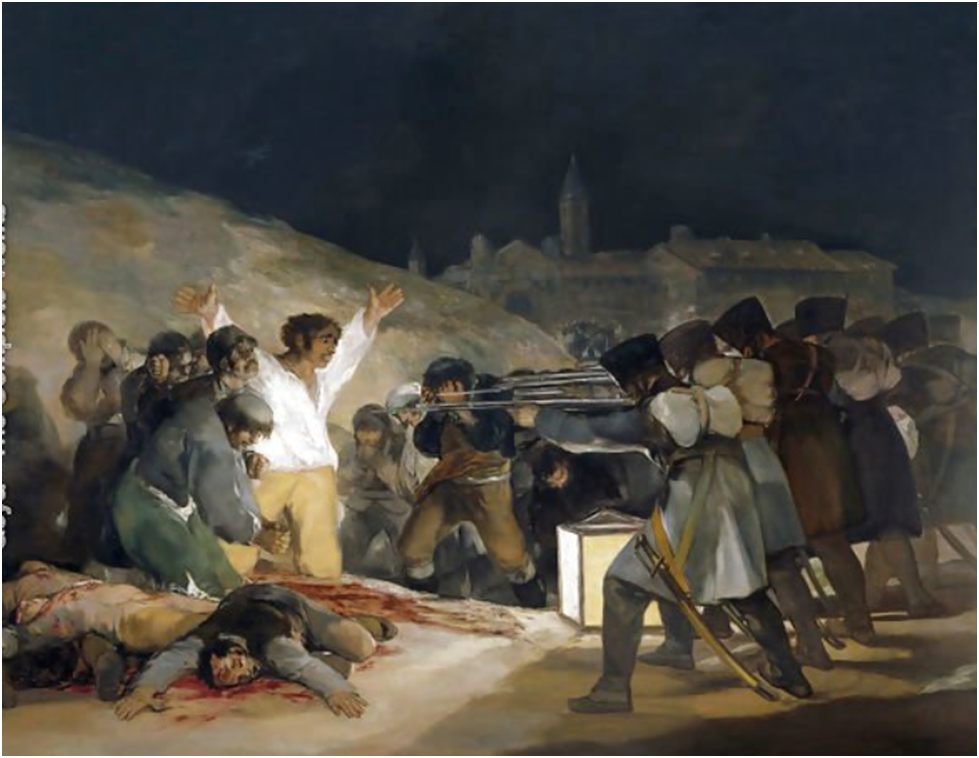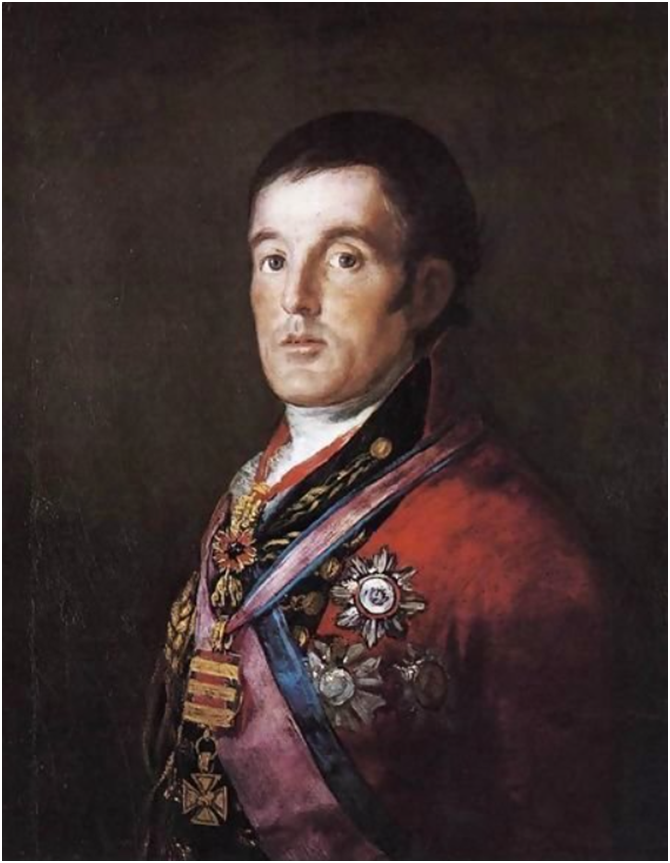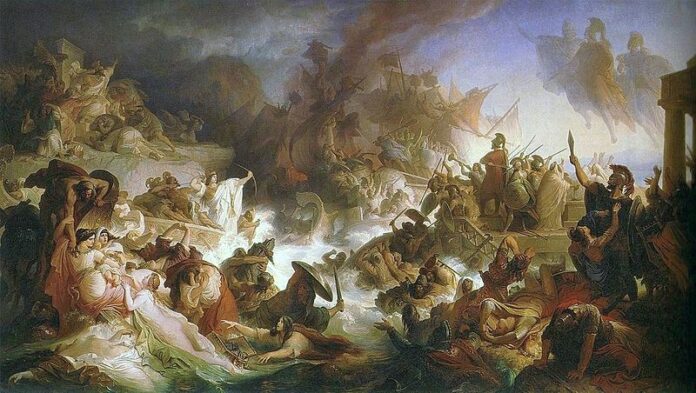Francisco de Goya was a Spanish royal painter born in 1746 in Saragossa, Spain. Goya underwent his artist training in Madrid and Zaragoza. The artist Francisco Goya was trained by Jose Luzen and Anton Raphael Mengs before moving to Rome in 1770; he remained in Rome till 1772.
Many of Goya’s early paintings were Neoclassical works in the style of Mengs. Goya won the prestigious ‘Prix de Rome’ in 1775; it was awarded for his painting of Coriolanus. Due to the influence of Goya’s wife’s uncle, he was able to become the court painter to Charles IV of Spain.
Goya’s works became famous for his expert portrayals of the royal family and Spanish aristocracy as a court painter. His paintings revealed his ability to discern personalities and portray them uniquely. Unfortunately, Goya contracted an unknown illness in 1792 that rendered him deaf and caused him to be mentally ill. He lived the last some years of his life in a villa outside Madrid. Artist Fransisco Goya was an enormously talented artist who had a tough life.

The Peninsular War
This war was fought in the Iberian Peninsula by Spain, the United Kingdom, and Portugal against the First French Empire, who were invading and occupying territories during the Napoleonic wars. It is thought to be connected to Spain’s Spanish War of Independence. The conflict began in 1807 when French and Spanish soldiers attacked and seized Portugal via Iberia, and it intensified in 1808 after Napoleonic France occupied its ally, Spain.
Napoleon Bonaparte compelled Ferdinand VII and his father, Charles IV, to abdicate, after which he placed his brother Joseph Bonaparte on the throne of Spain and issued the Bayonne Constitution. However, most Spaniards despised French rule and waged a terrible fight to expel them.
On May 2, 1808, the Dos de Mayo Uprising began in Spain, and on April 17, 1814, Ferdinand VII was returned to the throne. However, the Spanish administration was shattered by the French occupation, and the country was divided into feuding provincial juntas. The incident is still remembered as the bloodiest in contemporary Spanish history, outnumbering the Spanish Civil War in terms of bloodshed.
Goya’s Painting Style
The style of painting Goya did as a young man is called Neoclassicism. This means it’s based on the classical art of ancient Greece and Rome. The people in the painting by artist Francisco are idealized figures with perfect bodies and faces. You can see paintings like this by Mengs, Pompeo Batoni, Joseph-Marie Vien, Jacques-Louis David, and Antoine-Jean Gros.
In a formal tone: But he’s not just copying his predecessors. His use of color and brushstrokes has more sparkle than theirs; we can see that even though these paintings were created over two hundred years ago!
While later works of artist Francisco Goya would become darker and more experimental, as a young artist, he painted portraits of the Spanish royal family and its aristocracy. During this period, he gained renown for painting many members of the Spanish court and his work depicting different aspects of Spanish life.
Goya’s Career During The Peninsula War
When Goya was enjoying the success of his official career in 1808, Charles IV and his heir Ferdinand were compelled to abdicate in short succession, Napoleon’s soldiers marched into Spain, and Napoleon’s brother Joseph seated the throne. However, Goya kept his role as a royal painter, although he painted both Spanish and French generals throughout the war, including a picture of the Duke of Wellington in 1812.
He captured his responses to the invasion and the atrocities and tragic repercussions of the war in a collection of engravings called The Disasters of War (first exhibited in 1863), for which he did sketches while the war was going on. The brutal, violent scenes that he undoubtedly witnessed show up in theatrical compositions and are depicted with line detail and aquatint that give the impression of authenticity.

Goya – Portrait of the Duke of Wellington
The Restoration
After the departure of the invaders, Ferdinand VII was restored in 1814, and Goya was pardoned for his service to the French king and reinstalled as the first court painter. The paintings May 2, 1808, also known as “The Fight of the Mamelukes,” and May 3, 1808, in Madrid, also known as “The Executions,” were created to commemorate the popular uprising in Madrid. They are dramatic realism compositions, similar to The Disasters, and their gigantic grandeur adds to their emotional impact.
The impressionistic style in which they were painted foreshadowed and affected other nineteenth French artists, notably Édouard Manet, who was also influenced by May 3’s composition. Goya conveyed the brutal tyrant’s nature more powerfully than any description in several pictures Ferdinand VII created after his restoration. His repressive rule drove most of his allies and Goya himself into banishment.
He painted many other official paintings, but his self-portraits and portraits of his friends and relatives had the same subjective quality. The Agony in the Garden (1819), as well as The Last Communion of St. Joseph of Calasanz (1819), are two religious creations from this period that reflect absolute devotion more than any of his prior church paintings.
Goya’s Last Days
In 1792, Goya was in his mid-40s when he contracted a severe illness (some believe it was likely meningitis) that left him deaf and mentally ill. He had already been deaf in one ear for years – though there is no evidence to support the myth that he lost his hearing from a fall from a horse, as some say.
Goya painted his Black Paintings, pictures of intense pessimism and darkness, on the walls of the Quinta del Sordo from 1819-to 1823. The paintings were never meant to be moved or displayed, but they have become some of Goya’s most famous works today. These include Saturn Devouring His Son and Witches’ Flight. There is a sense that these artworks are related to Goya’s illness in 1792 when he was struck deaf by an unknown cause.
The exact nature of Goya’s mental illness remains unknown, but it resulted in severe depression and frequently incapacitated the artist for long periods, during which he became very reclusive.
Conclusion
With his expressive brushstrokes, revolutionary use of lighting, and modern subject matter, Francisco Goya is considered one of the most important artists. He is best known for his portraits and vivid scenes of Spain during the Peninsular War. Following a difficult childhood, Goya experienced great success as a court painter to Charles IV but suffered a mysterious illness that left him deaf.





























